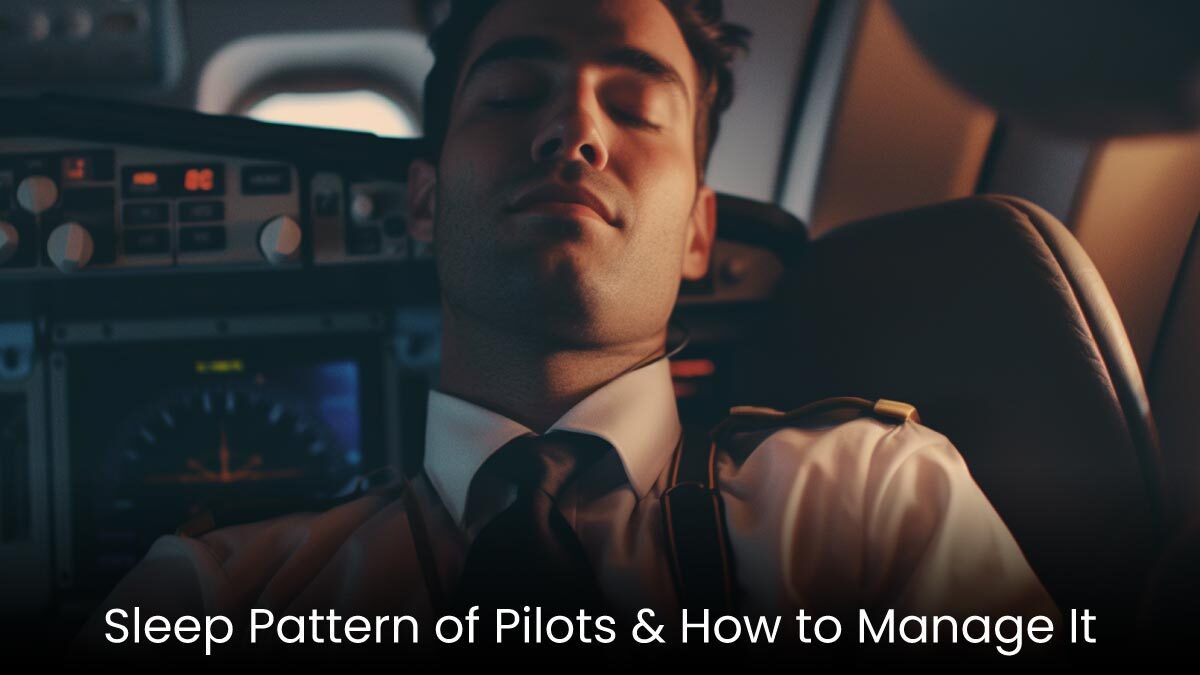
When you think of a pilot, the first image that likely comes to mind is someone confidently navigating a plane through the skies, guiding passengers safely to their destination. However, what most people don’t see is the demanding lifestyle behind the scenes—the irregular hours, constant time zone changes, and disrupted sleep patterns that come with the job. A pilot’s lifestyle is far from the typical 9-to-5, and this can have a significant impact on their sleep pattern, making it crucial for them to develop strategies to manage it.
Understanding a Pilot’s Sleep Challenges
Pilots face unique challenges when it comes to maintaining a regular sleep pattern. Unlike most professions, pilots don’t have the luxury of consistent working hours. One day they might be flying across multiple time zones, and the next, they could be scheduled for a night flight. This unpredictability often leads to circadian rhythm disruption, making it difficult for pilots to get quality sleep.
One of the major issues pilots encounter is jet lag, a condition caused by quickly traveling across time zones. This can leave the body feeling tired, disoriented, and out of sync with the local time. Additionally, the long hours spent in-flight and irregular duty shifts can result in fatigue, impacting alertness and decision-making abilities.
The Importance of Sleep for Pilots
Sleep is a crucial element of pilot lifestyle. It plays an important role in maintaining alertness, focus, and overall well-being. Pilots must be sharp and quick in their reactions, especially during critical moments like takeoff, landing, or when dealing with unexpected issues mid-flight.
In fact, fatigue is considered one of the leading contributors to aviation incidents. Lack of sleep can impair a pilot’s cognitive functions, slowing their reaction time and hindering their ability to make split-second decisions. Therefore, prioritising good sleep habits is essential for ensuring both safety and efficiency in the cockpit.
Managing Sleep in a Pilot’s Daily Routine
Managing a healthy daily routine of a pilot can be a challenge, but there are practical strategies to help maintain balance and ensure optimal rest.
- Developing a Consistent Sleep Schedule
Whenever possible, pilots should try to maintain a consistent sleep routine. This means going to bed and waking up at the same time, even on days off. A regular sleep schedule helps regulate the body’s internal clock and makes it easier to adjust to different time zones. - Creating a Restful Sleep Environment
A comfortable sleep environment can make all the difference in how well a pilot rests. Dark curtains, white noise machines, and comfortable bedding can help promote uninterrupted sleep. It’s also important to reduce exposure to blue light from screens at least an hour before bed, as this can delay the production of melatonin, the hormone that helps regulate sleep. - Incorporating Relaxation Techniques
Relaxation exercises such as deep breathing, meditation, or progressive muscle relaxation can help pilots unwind before bed. These techniques are effective for calming the mind and helping the body prepare for rest. - Mindful Diet and Exercise
Eating a balanced diet and incorporating regular physical activity into the daily routine of a pilot can significantly improve sleep quality. However, it’s important to avoid heavy meals, caffeine, and alcohol close to bedtime, as they can interfere with restful sleep. - Using Naps Wisely
Napping is a pilot’s secret weapon. While it’s not always possible to get a full eight hours of sleep, short naps can help reduce fatigue and improve alertness. A 20- to 30-minute nap can recharge a pilot before or after a flight, ensuring they stay sharp and focused.
How Airlines and Aviation Training Programs Help
Recognising the challenges pilots face, airlines and pilot training programs like those at Insight Aviation have introduced measures to ensure their pilots are well-rested. Training emphasises the importance of sleep hygiene and managing fatigue, giving cadets the tools they need to maintain healthy sleep patterns throughout their careers.
Additionally, airlines implement regulated rest periods between shifts to allow pilots adequate time to recover. This helps reduce the risk of fatigue-related incidents and ensures pilots are fully alert when they step into the cockpit.
Conclusion
In an industry where focus and alertness are paramount, managing sleep is an essential aspect of a pilot’s lifestyle. By developing a consistent routine, creating a restful sleep environment, and prioritising relaxation, pilots can improve the quality of their sleep and ensure they’re performing at their best. The aviation industry, including training programs like those offered by Insight Aviation, continues to promote good sleep practices to prepare pilots for the challenges of the skies.
As aspiring pilots navigate their journey, understanding the role of sleep in aviation will not only help them manage their health but also contribute to their success in the cockpit.
FAQs
1. What is the typical sleep pattern for a pilot?
Pilots often have irregular sleep patterns due to shifting schedules and long flights, making it difficult to maintain a consistent routine.
2. How does the daily routine of a pilot affect sleep?
The daily routine of a pilot often involves long hours and travel across time zones, leading to fatigue and disrupted circadian rhythms.
3. How can pilots manage their sleep?
Pilots can manage their sleep by creating a consistent sleep schedule, improving their sleep environment, and incorporating naps when needed.
4. Why is sleep so important for pilots?
Sleep is crucial for maintaining alertness, decision-making skills, and overall safety during flights.
5. How do pilot training programs address sleep issues?
Programs like Insight Aviation’s IndiGo Cadet Pilot Programme teach pilots about the importance of sleep management and provide guidelines on maintaining a healthy balance between work and rest.

